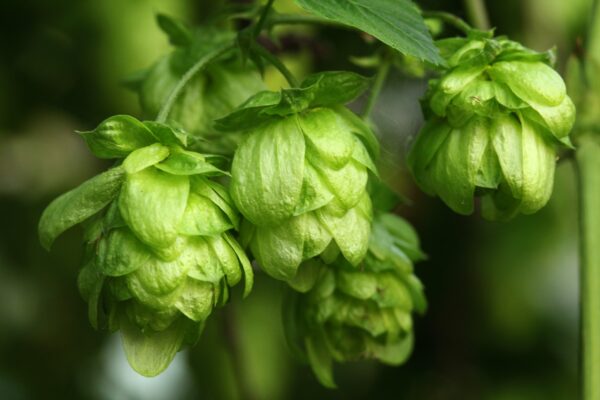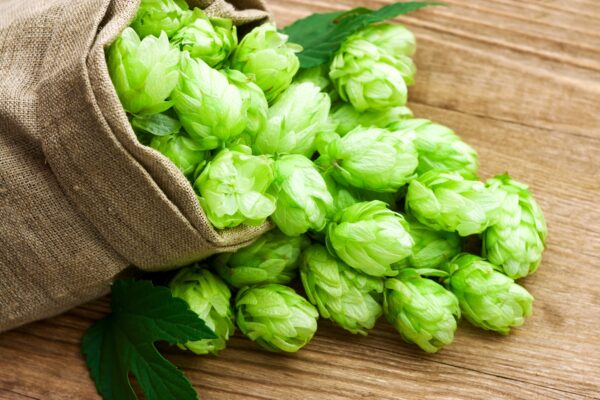If you’re new to home brewing, you might be overwhelmed by all the hops varieties available. Each type produces a brew with different characteristics, so it’s essential to find the hops that will brew the perfect homebrew of your dreams.
Noble hops are one of the many types out there. Each has various characteristics and brewing outcomes. However, do you know what noble hops are and why you should choose them for your homebrewing?
If you’re curious about what makes these hops so noble and want to see if they could be a perfect fit for you and your tastes, keep reading!
What Are They and Where Did They Come From?

As with any wine grape variety, the exact region that hops come from greatly affects their signature flavors and makes them more appropriate for certain types of brews. When it comes to noble hops, these are traditional varieties grown in Europe and considered classics.
If you think of hops as award-winning show dogs, noble varieties would be the ones with exceptional pedigrees that stretch back for generations upon generations. Historically, hops were first differentiated from each other and sold with a premium guarantee once growers realized that plants from certain regions outperformed others in quality when brewing medieval beer.
German hop-growers introduced the use of a hop seal to guarantee product quality and pedigree around the 1500s. However, the term “noble hop” wasn’t used until the 1970s, when it was introduced to refer to the historical use and top-notch, persisting quality of these varieties.
Technically, the “noblest” thing about noble hops is their age-old marketing! You’ll find the flavor of these hops to be authentically noble, enhancing the flavors of pilsners and continental lagers with herbal and floral notes, slightly spicy flavor, and delicate notes that are light on bitterness and heavy on complex aromatics.
Noble hops are some of the oldest varieties that are still authentic to their original and top-performing growing regions. One of the benefits of these authentic varieties is that their flavor profiles are cemented by hundreds of years of single-region growing. If planted elsewhere, they’ll still yield the same strong and resilient characteristics people love.
Types of Noble Hops

There are four types of noble hops that you’ll hear about as you research them for your home brewing purposes. The four notable noble hops all have German names; Hallertauer mittelfrüh, Saaz, Tettnanger, and Spalt. They are named after the German region in which they originate.
While each type is slightly different and unique, each has low Alpha acid levels, meaning that they will produce a brew with a more delicate bitterness than other types of hops. You’ll find that many of the most famous and desired brews from around the world start with noble hops or hybrid varieties derived from them.
Hallertauer Mittelfrüh: Lightly Citrus, Spicy, Herbal, Earthy Profile
If you’re looking to brew a quality batch of beer, you might want to follow in the footsteps of some of Germany’s oldest and most notable brewers by utilizing Hallertauer hops.
This variety derives its name from the largest hop-growing region in Germany, where it is grown. It has a strong, desirable flavor profile that produces a pleasantly grassy earthy flavor balanced by fruity and floral notes. The Hallertauer is typically used as a single hop.
Despite its stand-alone ability, this variety is mixed with others to create an even more robust flavored brew that is just as unique as the brewer. If you enjoy the refined, low-bitterness flavors of German-style Pilsners, then you’ll want to give Hallertauer hops a try.
Tettnang: Earthy, Spicy, Aromatic, Floral Profile
This famous variety is also named after the region it’s grown in, the Tettnang region in Germany near the Swiss border. They are aromatic and subtly complex. Tettnang hops are popular for use in any German-style beer or ale but are added into nearly any kind of brew to make the beer tastier.
Since these hops are complex, many brewers suggest going easy on the brewing time, producing a flavor reminiscent of black tea. It’s best used as a companion hop in a multiple-variety craft beer, so long as its flavors are paired well and allowed to shine.
If you like a balanced flavor profile with a subtle floral and spicy note, then Tettnang hops should definitely be on your list to try. However, if you can’t get your hands on some, this variety is genetically similar to the next variety we’ll discuss. They are used interchangeably.
Saaz: Floral, Spicy, Mildly Sweet Profile
Saaz hops are notable, being the only noble hop historically grown outside of Germany. This native Czech variety is prized for Czech Pilsner and is its most quintessential and mandatory component.
To many, these hops have a unique, piney note that drowns out any citrus notes, which is complementary to its low bitterness and crisp, clean flavors. Given its smooth, soft, elegant flavor profile, it makes a great addition to any malt brews.
Despite the subtle differences, Saaz hops are a great substitute for Tettnang hops and vice versa due to their shared complex and distinct flavor profiles that can elevate your unique homebrew.
Spalt: Woody, Floral, Spicy Profile
From the Spalt region of the Bavarian town of Nuremberg, this variety is a classic—old but good! Like other noble hops, its aromatic qualities beat out its bitterness, giving it that delicate quality that attracts brewers to it.
This was the first of the noble hop varieties, and in fact of any hop variety, to be guaranteed by the German hop seal, which ensured quality and origin documentation even in the early eras of hop production.
This variety, which originated in the eighth century, is a versatile mainstay for pilsners, helles, and any variety that harkens back to a traditional European taste. As one of the most popular varieties, it’s excellent for dry-hopping brewing methods and late boil additions.
When To Use Noble Hops
Now that you know about the types of noble hops and have chosen a favorite, let’s talk about how to incorporate them into your homebrewing!
While your brewing choices are limited only by your tastes and creativity, you’ll want to incorporate them first into one of several types of brews that they’re best associated with.
European lagers, such as pilsners and helles; German ales; Belgian ales; American wheat beer; and American blonde ales all benefit greatly from the delicate and light-bitterness profile of noble hops. These hops are also higher in essential oil than other types of hops. They make great additions to produce nuanced and complex flavors.
How to Get Noble Hops
For homebrewing flavor purposes, noble hops are a great choice. However, since they’re of such a high standard, they are hard to come by in the States. While you can often find American-grown versions of these varieties, the flavor profile is altered from the original DNA.
Many retailers will offer dual varieties of noble hops. They should be easily distinguishable by their name, which will indicate that they were grown in America versus Europe.
If you’ve had noble hop brews before and are expecting a replica of that flavor, then you’ll likely be disappointed by American hop varieties. But if you want to experiment, they are still worth a try and are a decent starting point.
However, substitution is possible if you keep your eye on the most important components of noble hops: low acid and bitterness and high essential oil concentration. According to experts, each noble hop variety has several regular hop varieties that can provide a decently close dupe if needed.
For Saaz hops, Lublin, Sterling, or Sladek hops can provide a closely replicated profile. If you want more of a Tettnanger taste, then try the Fuggle hop variety (and don’t forget that you can also interchange Saaz and Tettnanger hops with each other). Hallertauer hops can be passably comparable to Mt. Hood and Liberty hop varieties, and the Spalt variety is interchangeable for Strisselspalt hops.
How to Use Noble Hops
Once you’ve procured your noble hops or substitute, it’s time to get brewing! As we’ve mentioned before, these varieties are commonly found in lagers, ales, wheat beers, and any other kind of smooth, aromatic brew.
Use them in your homebrewing the same as other hops. They can even lend themselves to dry hopping (especially Spalt hops), which is perfect for enhancing the exotic aromas of delicately and complexly flavored brews.
Once you get comfortable using noble hops, the sky’s the limit! You can branch out and try different methods to experiment with their effects on flavor.
Storing Noble Hops
One crucial component of incorporating noble hops into your homebrewing routine is proper storage. You have to be extra careful with the storage of noble hops because of their high essential oil concentrations.
These components make noble hops’ shelf life a little more volatile since light and heat exposure can cause essential oils damage and deteriorate the hops. You want to make sure your hops are as fresh as possible upon use. If you need to store them, make sure to do it well! You don’t want to plan out the perfect European brew to find that your brew supply has been ruined because you failed to preserve your hops correctly.
Proper storage for noble hops includes tight sealing and low temperatures. The conditions inside your freezer are perfect. But even then, storage of fresh, whole hop heads for too long will still dull the flavor notes and dampen their effect on the end product of your brewing.
When ordering your hops, there’s often not much you can do about how they are shipped to you. In many cases, especially if you are ordering foreign varieties from overseas, the hops are exposed to damaging heat, light, and air that will diminish the quality of your hops.
Inspect ordered hops upon arrival for swelling, which is a key sign that they’ve spoiled in transit. It’s helpful to research the company you consider ordering from upfront to see if they take special precautions in shipping the product to avoid such conditions.

Final Thoughts
Hopefully, you’re now ready to dive feet-first into the rewarding world of smooth, austere-tasting European brews, all from the comfort of your own home. While there are many hops to choose from, noble hops and their substitutes will provide you with the classic, smooth, delicious beer flavor you’ve come to expect.
Make sure to choose your variety carefully to match the flavor profile that most appeals to you. After that, you may have to work a little harder to find and purchase your chosen variety, but it will be more than worth it once you have that smooth, aromatic, finished product in your hand.

